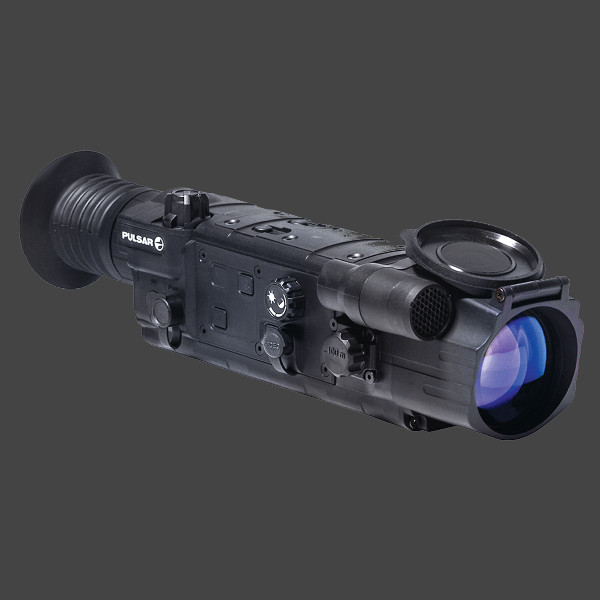a. Export and import restrictions perspective: Regulations governing the international trade of night vision scopes
The international trade of night vision scopes is subject to various export and import restrictions imposed by individual countries and international agreements:
Dual-Use Technology: Night vision scopes often fall under the category of “dual-use” technology, meaning they can have both civilian and military applications. Export of such technology is subject to strict controls to prevent misuse or diversion for military purposes.
International Export Control Regimes: Countries participate in international export control regimes, such as the Wassenaar Arrangement and the Missile Technology Control Regime (MTCR), which include regulations on night vision scopes and other sensitive technologies.
End-User Certificates: Many countries require end-user certificates to verify the legitimate use and destination of night vision scopes, ensuring they are not diverted to unauthorized or prohibited recipients.
Destination Country Restrictions: Some countries place specific restrictions on exporting night vision scopes to certain regions or countries due to political, security, or human rights concerns.
Technology Transfer and Collaboration: International cooperation and collaboration between countries with advanced night vision technology can facilitate responsible technology transfer while maintaining stringent export controls.
b. Global military use perspective: How different countries utilize night vision scopes in their armed forces
Night vision scopes are widely used in armed forces worldwide, enhancing military capabilities in various ways:
Tactical Operations: Night vision scopes provide a significant advantage in tactical operations, allowing military personnel to conduct covert and effective missions during nighttime and low-light conditions.
Surveillance and Reconnaissance: Armed forces use night vision scopes for surveillance and reconnaissance activities, gathering intelligence and monitoring potential threats.
Border Security: Night vision scopes aid in securing borders and sensitive areas, enhancing the ability to detect and intercept illegal crossings or activities during nighttime.
Special Forces Operations: Special forces units extensively rely on night vision scopes for their specialized missions, where stealth, precision, and situational awareness are paramount.
Air and Maritime Operations: Night vision scopes are also utilized in air and maritime operations, enabling pilots and sailors to navigate and identify targets during night flights and operations.
c. International cooperation perspective: Collaborative efforts to regulate night vision scope technology
Recognizing the global implications of night vision scope technology, countries and international organizations engage in collaborative efforts to regulate its use:
Export Control Forums: Participating in export control forums, countries work together to establish common guidelines and standards for the responsible export of night vision scopes and other sensitive technologies.
Information Sharing: International cooperation involves sharing information about emerging night vision technologies and their potential applications, helping countries stay informed about advancements and potential security risks.
Capacity Building: Developed nations may provide assistance and capacity-building programs to help other countries enhance their regulatory frameworks and control measures for night vision scope technology.
Harmonizing Standards: Collaborative efforts aim to harmonize standards and regulations across countries to prevent discrepancies and loopholes in export control systems.
d. Surveillance concerns and diplomatic implications: Debates on night vision scope usage in international relations
The usage of night vision scopes in surveillance and intelligence-gathering activities raises concerns and diplomatic implications:
Sovereignty and Privacy: The use of night vision scopes for surveillance activities by foreign entities in another country’s territory can raise questions of sovereignty and privacy violations.
Border Incidents: The presence of night vision scopes near sensitive border areas may lead to diplomatic incidents if perceived as a provocative or threatening act.
Strategic Interests: The deployment of night vision scope technology in sensitive regions may be perceived as an attempt to gain strategic advantages, potentially escalating tensions between countries.
Non-State Actors: The illicit acquisition or use of night vision scopes by non-state actors, such as terrorist groups or criminal organizations, presents security challenges and diplomatic concerns.
In conclusion, night vision scope legislation and international use involve a complex interplay of export and import restrictions, global military adoption, international cooperation to regulate technology, and debates on its surveillance implications. Countries must strike a balance between promoting responsible use of night vision scopes for legitimate purposes and preventing their misuse or diversion for illicit activities. Collaborative efforts between nations are essential in harmonizing standards and sharing information to address security risks associated with night vision scope technology. Additionally, surveillance concerns and diplomatic implications arise when night vision scopes are deployed near sensitive areas or used for intelligence-gathering activities, requiring careful considerations in international relations to maintain peace, security, and respect for sovereignty and privacy.










